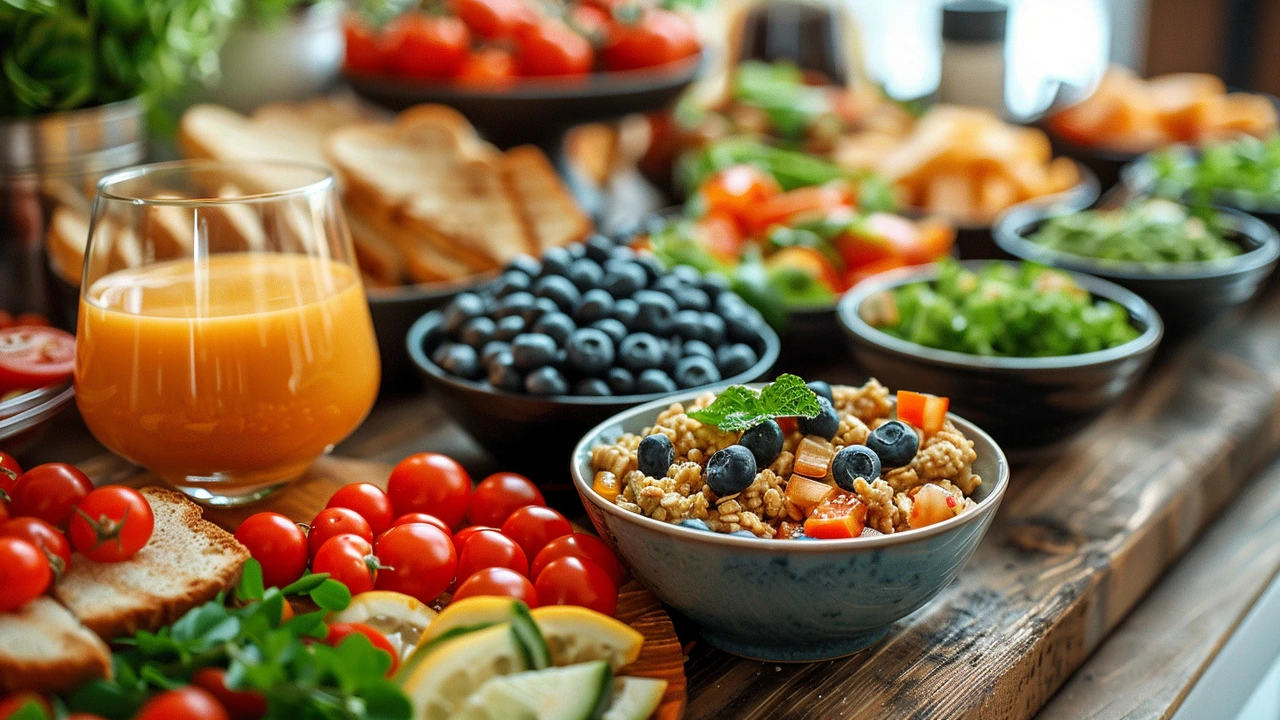The glycemic index (GI) ranks carbohydrate foods by how fast they raise blood sugar compared to pure glucose. Numbers run from 0 to 100. Glucose is 100, and foods fall into low (55 or less), medium (56–69), and high (70 or more) ranges. Knowing GI helps you pick carbs that keep energy steady and hunger in check.
GI doesn’t tell the whole story though. Portion size matters. Glycemic load (GL) combines GI with the amount of carbs in a serving: GL = (GI × carbs in grams per serving) / 100. A small portion of a high GI food can have a low GL. Use GL and GI together to judge a real meal’s effect on blood sugar.
Here are practical examples so the numbers mean something: white bread ~75, baked potato ~85, watermelon ~72, white rice ~73. Brown rice is lower, around 50. Rolled oats are about 55. Lentils and most beans sit low, near 30. Apples and oranges are low too, typically in the mid 30s. Remember values vary by variety and cooking method.
Cooking and processing change GI. Finely ground flour or instant oats raise GI compared with whole grains or steel cut oats. Ripe fruit often has higher GI than firmer fruit. Cooling some cooked starches (like rice or potatoes) can lower GI slightly by forming resistant starch.
Start by swapping a few high GI items for lower options: choose brown rice or quinoa instead of white rice, pick whole fruit over juice, replace white bread with whole grain bread. Combine carbs with protein, fat, or fiber to slow digestion. For example, add peanut butter to toast, or have beans with rice. These combos lower the meal’s overall impact on blood sugar.
If you’re managing diabetes or trying to lose weight, watch both GI and portions. Aim for lower GL meals: keep carbs moderate, add vegetables, and include a protein source. Test what works for you by checking energy, cravings, and, if you use a glucose meter, your post-meal readings.
Quick tips and common pitfalls: don’t rely only on GI—calories, vitamins, minerals, and fiber matter too. A candy bar can have similar GI to a baked potato but offers far fewer nutrients. Also don’t assume “low GI” means no portion control. Finally, consult your healthcare provider before making big changes if you have a medical condition.
A quick low-GI plate: grilled chicken, a cup of mixed salad greens, half a cup of cooked lentils, and a small serving of brown rice. Add olive oil, fresh lemon, and veggies for flavor. This mix gives protein, fiber, healthy fat, and a modest carb load so blood sugar stays steadier than with high-GI choices.
Using GI as one tool makes carb choices clearer. Pick whole foods, combine nutrients, and pay attention to serving sizes. That’s a simple way to keep energy steady and feel better after meals.

Navigating breakfast options as a diabetic can be challenging, but it's crucial to start the day right. This article provides practical and tasty breakfast ideas that align with diabetic dietary needs. It focuses on low glycemic index foods, provides easy recipes, and explains why these meals are beneficial. Whether newly diagnosed or seeking to revamp your morning routine, discover how to make breakfast a healthful cornerstone of your day.
Read More